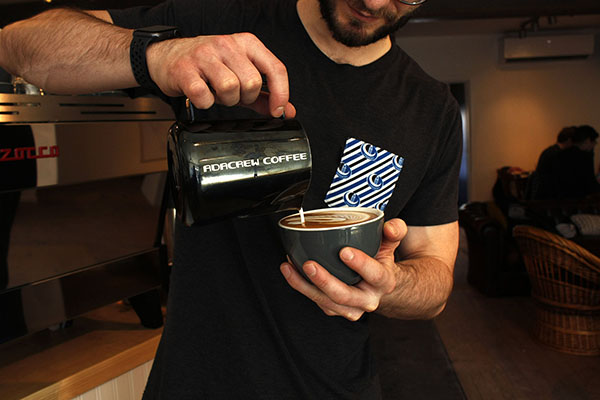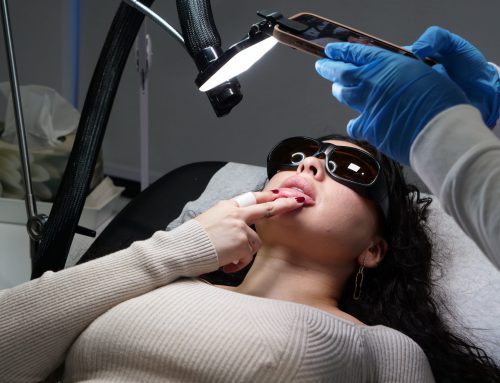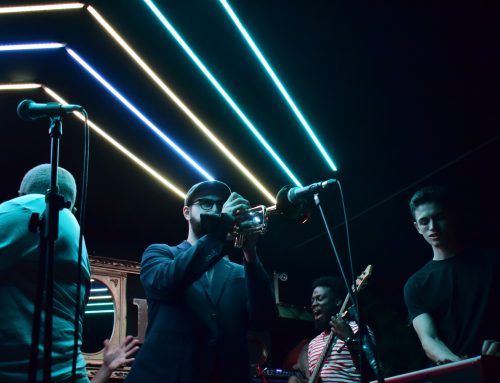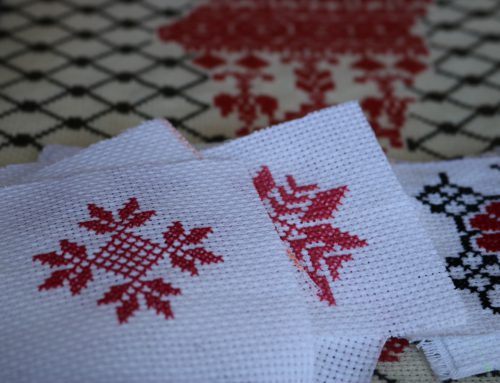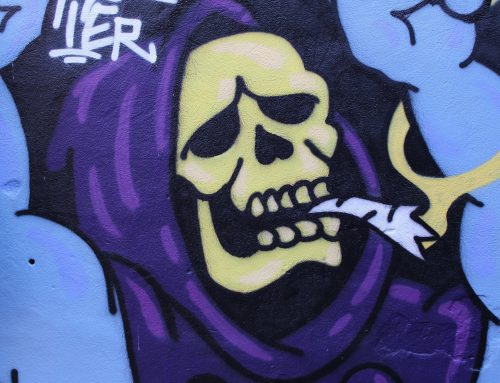BY Alissa Muller & Brittany Henriques
Th3rdwave app founder Tomas Chevez says he never sipped a cup of coffee until he was 22 years old. He even hated the smell. Then, one day after a long meeting, an owner of a shop served him an espresso. He had to drink it, there was no escape.
“I actually loved it,” he recalls. Almost ten years later, he founded an app entirely based on coffee and coffee shops: Th3rdwave.
“Third Wave is the one cup that is going to change your behaviour forever. You can’t go back after that,” says Chevez.
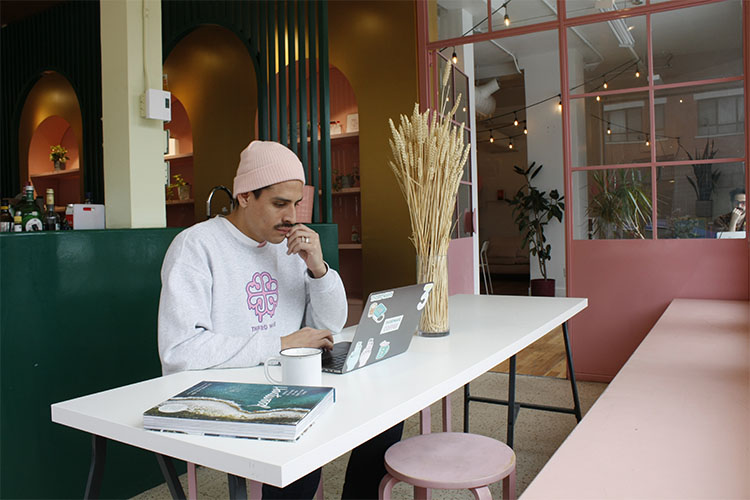
Th3rdwave app founder Tomas Chevez enjoying a coffee at Pastel Rita in Montreal’s Mile End. Photo by Alissa Muller.
Food writer at the Montreal Gazette Amie Watson says third wave coffee shops, independently owned businesses that serve fair-traded coffee, are moving in the right direction. She believes the trend will grow exponentially.
“Coffee is so important for so many people. It’s a drug, it’s addictive, people are not going to give it up,” she says.
In the past three years, Montreal has seen a boom in third wave coffee shops, even though the third wave concept dates back 20 years.
According to Chevez, the recent rise is due mostly to cheap real-estate, plus a high concentration of universities and entrepreneurs in the city.
According to Chevez’s Th3rdwave database, there are 500 third wave coffee shops in the greater Montreal area. When he first started his mobile application back in 2017, there were only 100.
“There has been an average of over one new coffee shop opening per week in the last two years, just in Montreal,” he says.
According to Watson, even if third wave coffee shops are characterized by being “fancy looking” and pricey, it doesn’t mean the coffee will be better.
“A lot of people think that the taste is not as exceptional as it should be for what you’re paying, and I think that just all comes down to the individual,” says Watson. “Some people like more roasted beans, some people like something lighter, some people want more acidity, some people want more aroma, something fruity.”
An important aspect of the third wave movement revolves around the coffee being served in high-end spaces. Watson explains that third wave coffee has “a lot of association with wine tasting.”
To fully understand the third wave, one must first look at the first and the second waves. According to Simon-Pierre Caron, expert barista and co-owner of Caffè In Gamba, the first wave is the kind of coffee you find in the supermarket.
“People consume this coffee for the benefit of the coffee, and the taste does not really matter,” explains Caron. An example of this kind of coffee would be Maxwell House.
The second wave introduced espresso and other specialty coffees as luxury drinks. Starbucks is an example of a second wave coffee shop. Third wave is about pushing the second wave further by incorporating elements of craft coffee and aesthetic design.
“Third wave coffee shops are rising from independent coffee shops, independently owned,” says Chevez. Most of those coffee shops are owned by young entrepreneurs and are not part of a big conglomerates.
Both Caron and Chevez believe the basis of this new wave is the use of specialty coffees. “I like tasting new coffee every day and to be amazed by all the tasting notes,” says the barista.
Watson says the most important ingredient in a third wave coffee shop is the sourcing of the beans.
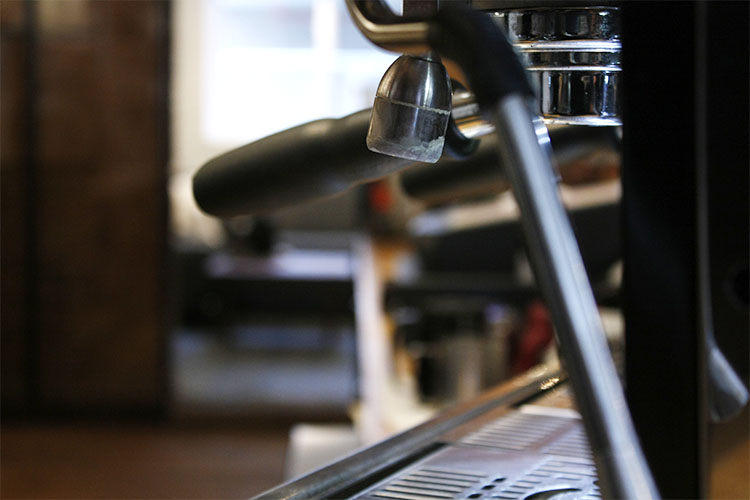
Coffee machine and milk frother at Caffè in Gamba’s second location on St-Viateur street. The first location on Park ave. is Montreal’s first known third-wave coffee shop. Photo by Alissa Muller.
Another important characteristic of third wave coffee shops is the decor.
The decor and aesthetics of the space are almost as important as the taste. The beauty of the coffee shop defines whether it is third wave or not.
“People eat with their eyes,” says Chevez.
The quality of the staff also plays an important role. The barista is at the forefront of the movement as he’s the last one to touch the coffee before serving it to the customer.
“I do like meeting new people every day, engaging with those people. The client contact is very important to me,” says Caron. There’s an interaction with customers, more than just the usual grab and go.
Baristas’ latte art also helped popularize the movement. Even though the trend, at its core, is about where and how the coffee is treated, the latte art helps get the word out through Instagram.
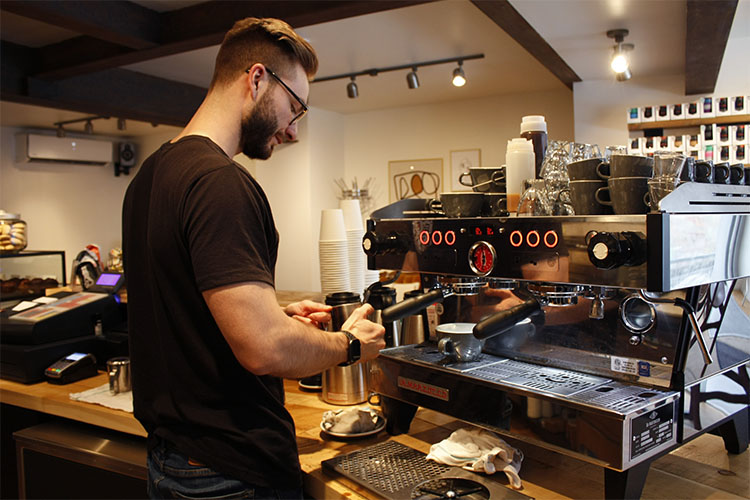
Simon-Pierre prepares a coffee at Caffè in Gamba in Montreal’s Mile End neighbourhood. Photo by Alissa Muller.
The third wave coffee movement also ties into the concept of conducting more ethical business. It’s trying to create a sustainable infrastructure around coffee by going directly to the suppliers and paying a higher price for their beans. “It’s about doing better business, about getting a better quality product and doing latte art,” says Caron.
However, Watson says that it’s easier for third wave coffee shops to market their ethical partnerships than to look at the impact they are having on some Montreal neighbourhoods.
“It’s easy to forget what’s happening locally and concentrate on an international scale and market that aspect than what you are taking away in your own city,” says Watson of third wave’s impact on gentrification.
Amy Darwish, a tenant rights lobbyist with the Comite d’Action de Parc-Extension, believes that coffee shops may not be the cause of the gentrification, but they’re definitely a symptom.
One such gentrified neighborhood, the Plateau, has over 112 third wave coffee shops, according to the Th3rdwave database. The shops are now establishing themselves in neighbourhoods with cheaper rents, like Saint-Henri, Griffintown, and Pointe-Saint-Charles.
Are third wave coffee shops a symptom of gentrification? Video by Brittany Henriques.
As a Saint-Henri resident, Chevez agrees that coffee shops are gentrifying areas, yet adds that “if it was not for coffee, it would still be gentrified by another movement.”
Watson says there is a demand and it’s obviously well liked by many residents, but also notes, “You are not hearing from the people that were upset in the first place, because maybe they have now left the area.”
Third wave coffee shop goers are typically young in Montreal. Sixty five per cent of the Th3rdwave app users are 25 to 35 years old. Most of them are students or young entrepreneurs.
“As a human being, we all need that third place to feel good and hang out with people, we’re social creatures,” says Chevez.
‘Round Table Tours offers a Third Wave Coffee Tour. This new tour explores the world of coffee in Montreal. “They are going to Pastel Rita for an espresso Martini, they’re going to Paquebot for lemonade infused coffee,” says Watson.
Chevez predicts that within the next two years there will be 1,000 third wave coffee shops in the greater area of Montreal. He thinks that over 100 locations will open in 2020 alone.
The “third wave movement is definitively a movement that is here to stay and might evolve. Some people are even talking about a fourth wave,” says Watson.
This fourth wave would be about creating coffee shops that respect even more environmental standards. According to Watson, this new wave would incorporate more elements of sourced beans and precision in pouring coffee.
The fourth wave is pushing further the concept of third wave and eco-responsible conduct. “Everybody likes progression, everyone wants a happy ending, but in business you need to always evolve,” says Watson.
Test your knowledge of third wave coffee. Media by Brittany Henriques and Alissa Muller.
